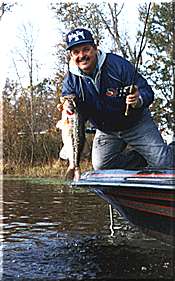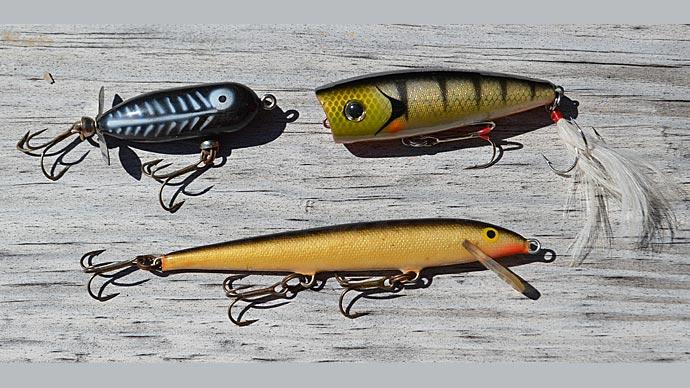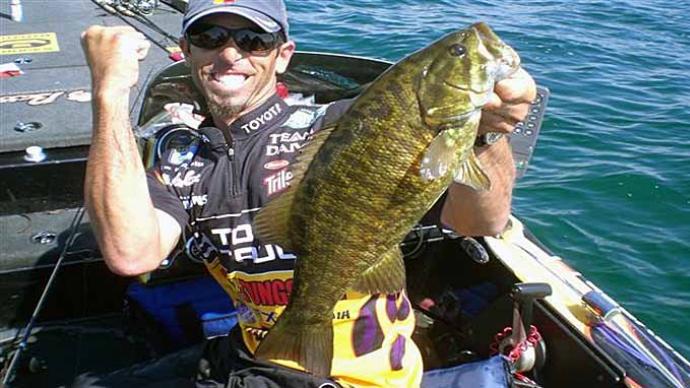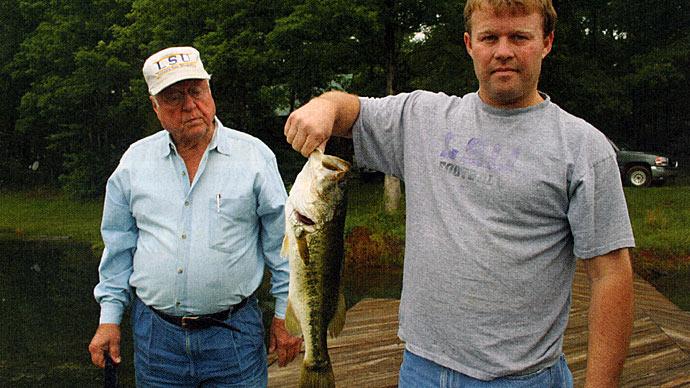
Jerkbaits, without question, would fall into the top-10 category of all artificial baits used by bass tournament anglers. These baits have been proven over and over to not only catch bass in numbers but catch quality bass as well. One of the primary reasons that so many anglers use these baits is that jerkbaits are considered one of the more versatile types of baits and can be fished just about anywhere at any time. You can use many different techniques and presentations when fishing with a jerkbait. I'll explain a few of the more popular presentations to help increase your success rate when it comes to catching bass.
There are two basic types or styles of jerkbaits: hard and soft jerkbaits. The soft jerkbaits are soft-plastic baits such as Bass Assassins, Squids, Slug-O's, Dartin' Shads, Skuirmin' Jerks, Flukes, Flappin' Shads, and so on. The hard jerkbaits are hard plastic or even wood baits such as Rapala's Husky Jerk, Jointed-Minnows, Floating Minnows, Smithwick's Rogues, Bomber's Long-A's, Rebel's Minnows, and Bagley's Ratlin' Twitcher. Many more of these same baits made from different manufacturers would fall under this category.
There are many techniques you can use with them. First, I'll cover some of the more popular techniques for topwater fishing while using these jerkbaits. Let's say that you pull up into an area where you would find thick floating vegetation in about 1- to 6-feet of water, and it is covering the surface with very little exposed open water pockets.
A soft jerkbait would be best to use in a situation like this simply because of the weedless rigging it allows you to use to keep from getting caught on the vegetation. In an area such as this, Texas rig the bait using a wide gap hook without any added weight. Now you're ready for business! Cast the bait into the midst of the vegetation and make short twitches periodically, letting the bait lay still. Keep repeating this technique back to the boat. If you don't have any vegetation on your body of water, then cast the bait over submerged structure areas.
Now, let's say that you are in an area with scattered vegetation with pockets of open water at the same depth. You can use either a soft or a hard jerkbait, but keep in mind that a hard jerkbait has exposed hooks already fastened to the bait, which means it is easy for the bait to get caught up on this vegetation. With either bait, cast it into these open pockets of water, make a couple of small sharp twitches, then let it lay still for a moment. After the bait lays still, the first twitch is usually when a bass strikes, so be ready!
In this same area, using a soft jerkbait, add a little weight to the bait so it will slowly drop to the bottom. Again, let it lay there for a moment, then make a couple of small sharp twitches lifting the bait back up to the surface and let it drop again. You will find that this technique can be advantageous if you try it. This technique will work around structure, riprap, docks, fall downs, bank edges, trees, stump areas, and just about any areas fishable.
Now, let's move out into deeper water areas to where you may have 6- to 10-foot depths. These same techniques already mentioned for surface and sub-surface presentations will work just as well in this deeper water, especially around and on top of submerged structures and vegetation. But now, let's fish a little deeper with these baits.
In the case of the hard jerkbait, select one that suspends and has a diving bill on the front of it to get it down under the waters' surface. Most of these hard jerkbaits will be made for the depth of water you choose to fish. The bigger the front bill, the deeper it will go.
Now, choose one for an 8-foot depth. Cast it out, start your retrieve to get it down to the desired depth, then start jerking or twitching it a few times and let it lay motionless for a moment. However, keep repeating this technique back to the boat when the bass are more active. You can twitch and jerk the bait back without any pause. One factor to remember when bass fishing is always letting the bass dictate how they want the presentation. So don't be afraid to experiment with your retrieve.
Now, let's use a soft jerkbait in this same area. To get the soft jerkbait down in deeper depths, you can rig it three ways.
- A Texas rig with a front weight.
- A straight rig with a pencil or nail weight inserted into the bait itself.
- A Carolina rig with the bait free-floating behind the rig.
Use the techniques I described above for these deeper depths, and hang on!
Take Care & God Bless!




